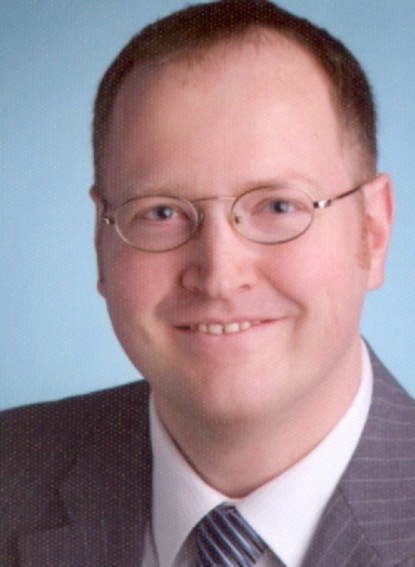Entwicklung, Aufbau und Charakterisierung einer variabel repetierenden, spinpolarisierten Elektronenkanone mit invertierter Isolatorgeometrie
Development, construction and characterization of a variable repetitive spin-polarized electron gun with an inverted-geometry insulator
PhD thesis
Within the scope of this thesis a pulsed source of spin polarized electrons Photo-CATCH was designed, constructed, characterized and has been put into operation. This source is based on the photoemission of spin-polarized electrons from GaAs-photocathodes.
Both the design of the electron gun, consisting of an ultra-high vacuum chamber and an electrode with Pierce geometry, as well as the properties of the electronbeam have been simulated with CST Studio. Results were a maximum electric field of (0.064 ± 0.001) MV / m*kV on the electrode surface and a beam emittance as a function of the radius of the laser spot on the photocathode of εn,x =(1,7478(4)*10-4*r/µm + 2,8(18)*10-5) mm*mrad at a beam current of 100 µA Currently Photo-CATCH provides electron beams with an energy of 60 keV, which can be expanded up to 100 keV by upgrading the high-voltage power supply. The electron gun has an inverted-geometry insulator to ensure a compact design of the ultra-high vacuum chamber and a maximum person- and machine-safety from sparkovers.
Since the properties of the laser light directly affect the properties of the generated electron beam a pulsed semiconductor laser system has been specially developed and built for Photo-CATCH. This is characterized by a high variability of its operating parameters, in particular its wavelength and repetition rate, in order to fulfill the broad variety of requirements of various nuclear physics experiments. By selecting the wavelength of the used laser diode highly polarized or high-current electron beams can be generated from GaAs-photocathodes. The time profile of the laser has direct influence to the longitudinal profile of the electron bunch. Through the radiofrequency modulation of the pumping current of the impedance-matched semiconductor laser system, consisting of a DC power source and an electrical pulse generator with 881 ps broad pump pulses, Lorentz shaped laser pulses with a minimum FWHM of (43.8 ± 1.2) ps at a pulse energy of (94.1 ± 4.7) pJ could be achieved. The behavior of the laser system and the used spiking effect of the transient response has been simulated and experimentally confirmed. Thus electric pump pulses with a length of about 350 ps are capable of generating ultrashort laser pulses of a few picoseconds. The repetition rate of the laser is directly determined by the electrical pulse generator, which gives a discrete variation of 0.61MHz to 2.9971 GHz for time-of-flight experiments and continuous electron beams at Photo-CATCH. In addition, it was possible to determine the excited state lifetime of the laser diode to (53.0 ± 4.7) ps.
To characterize the electron beam a beamline has been designed and built. The determination of the beam emittance is accessible via two wirescanners. The electromagnetic fields of aWien filter and a solenoid are capable of rotating the electron spin throughout the entire solid angle up to an electron energy of 100 keV, while a double-Mott-polarimeter is used to determine the degree of polarization. A deflector cavity with an unloaded quality of 10577 ± 175 and a coupling factor of 1.0038 ± 0.0002 is used for the transfer of the longitudinal electron bunch profile in the transverse plane, thus polarization and current profiles of the electron bunches can be measured with a resolution of less than 1 ps. An optical system to generate a supercontinuum enables wavelength-dependent quantum efficiency and polarization measurements of GaAs-photocathodes in a range of 480nm to 1000 nm.
In order to control and read out all of the components of Photo-CATCH and the lasersystem, a control system has been developed, which allows the operator a clearly arranged and intuitive control through a LabVIEW-based user interface and a gamepad.
Publications
- C. Eckardt, J. Enders, M. Espig, Y. Fritzsche, N. Kurichiyanil, J. Lindemann, M. Wagner: Development of Pulsed Laser Systems and Cathode-performance Studies for the S-DALINAC Polarized Injector. Conf.Proc. C1205201 (2012) 2642-2644 Presented at Conference: C12-05-20.1 Proceedings IPAC-2012-WEPPD054
- Martin Espig, Joachim Enders, Yuliya Fritzsche, Markus Wagner: Investigation of pulsed spin-polarized electron beams at the S-DALINAC. Proceedings of Science PoS (PSTP 2013) 059
- Martin Espig, Joachim Enders, Yuliya Fritzsche, Andreas Kaiser, Markus Wagner: Laser Systems Generating Short Polarized Electron Bunches at the S-DALINAC. Jul 2014 - 3 pages (2014-07) Conference: C14-06-16, p.MOPRI021 Proceedings


